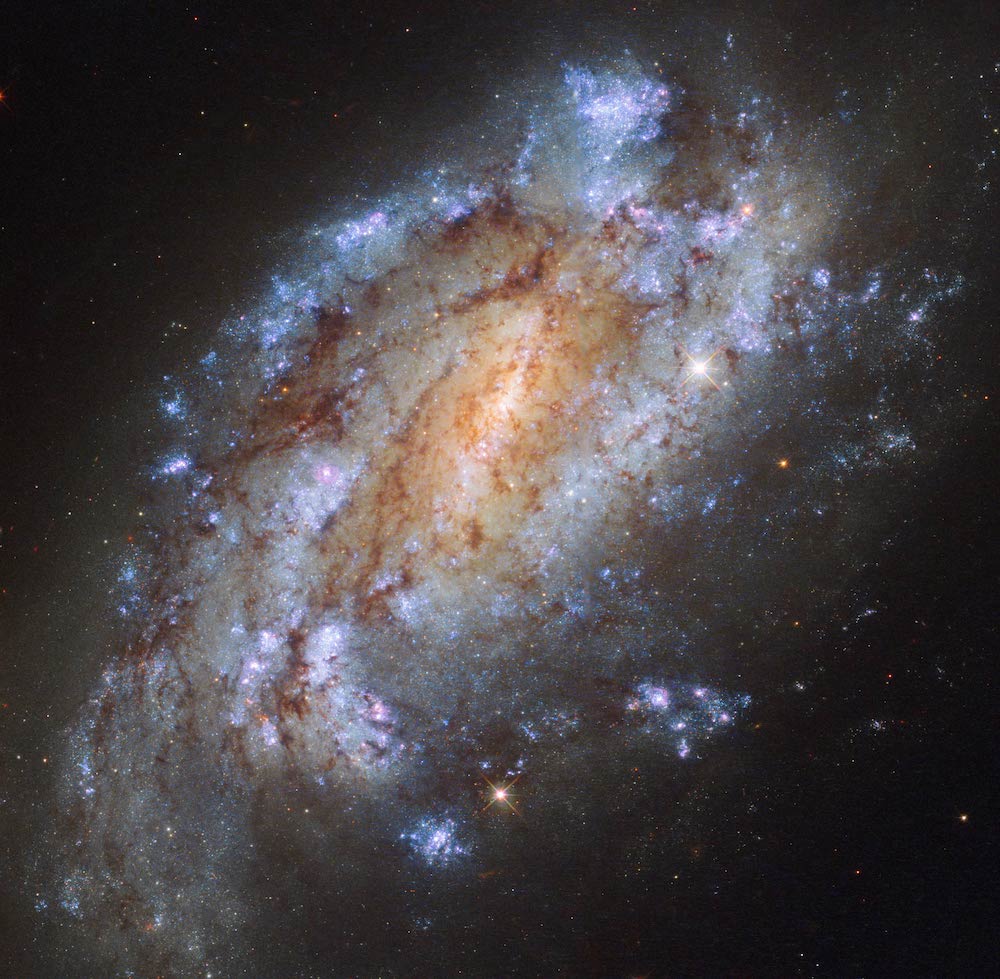First results of the MASCOT project suggest that galaxies "turn off" from the inside out
The Institute of Astrophysics of Andalusia (IAA-CSIC) participates in MASCOT, a large-scale study of the cold gas in galaxies, an essential element for understanding how galactic evolution works
The apparently immutable galaxies are in a state of flux motivated by various factors that drive their evolution. Among them stands out the formation of stars, which are born from large and cold clouds of molecular gas and whose abundance depends on the available gas. The MASCOT project, promoted by the European Southern Observatory (ESO) and with the participation of the Institute of Astrophysics of Andalusia (IAA-CSIC), was born to study this cold gas, essential for understanding galactic evolution. As a legacy, or public and open release of data, the project has just released its first results, with detailed observations of some two hundred galaxies.
“The galaxies that we observe in the current universe exhibit a wide variety of properties, but they are usually classified as blue and red, that is, galaxies that form stars and dim galaxies where stars are barely being born. Few galaxies show intermediate characteristics and are located in the so-called "green valley", which poses a problem: if the process of galactic evolution were simply a matter of the slow depletion of gas, we would expect to see many more galaxies in the green valley. Thus, some mechanism must be stopping the formation of stars, making the transition from blue to red relatively fast”, says Sara Cazzoli, a researcher at the Institute of Astrophysics of Andalusia (IAA-CSIC) who participates in the project.

MASCOT, led by Dominika Wylezalek (University of Heidelberg), will study in detail a set of galaxies from the MaNGA (Mapping Nearby Galaxies at Apache Point Observatory) database, a project that observed ten thousand galaxies and provided two-dimensional maps of, for example, the velocity and age of stars in the galaxies, the abundance of elements or the rate of star formation. However, MaNGA did not provide data on the cold phase of the gas. This is the focus of MASCOT, which will study the molecular gas content available for star formation, as well as the relationship between the properties of molecular gas, such as mass and kinematics, and the rate of star formation and composition.
In this first series of data, the scientific team has observed that, by relating the mass of molecular gas to stellar ages, galaxies with less gas tend to show older stellar populations near the galactic center, which is an indication that the quenching of galaxies, or the change from blue to red, occurs from the inside out.
"Feedback due to the activity of supermassive black holes and/or violent star formation is being explored to explain this cooling. These processes can trigger the formation of large gas motions, the galactic superwinds, and thus heat up the cold interstellar medium. This slows down or, in the most extreme cases, stops star formation, first in the centre of galaxies and then in more peripheral areas", says Sara Cazzoli (IAA-CSIC).
The MASCOT study is carried out from the Arizona Radio Observatory (ARO), a twelve-metre antenna capable of detecting cold gas, and this data release represents just over half of the 1400 hours of observation available. The total sample studied will be about 250 to 300 galaxies.
D. Wylezalek et al. "MASCOT - An ESO-ARO legacy survey of molecular gas in nearby SDSS MaNGA galaxies: I. first data release, and global and resolved relations between H2 and stellar content". Monthly Notices of the Royal Astronomical Society, Vol 510, Issue 3, March 2022 https://doi.org/10.1093/mnras/stab3356
Instituto de Astrofísica de Andalucía (IAA-CSIC)
Unidad de Divulgación y Comunicación
Silbia López de Lacalle - sll[arroba]iaa.es - 958230676
https://www.iaa.csic.es
https://divulgacion.iaa.csic.es

